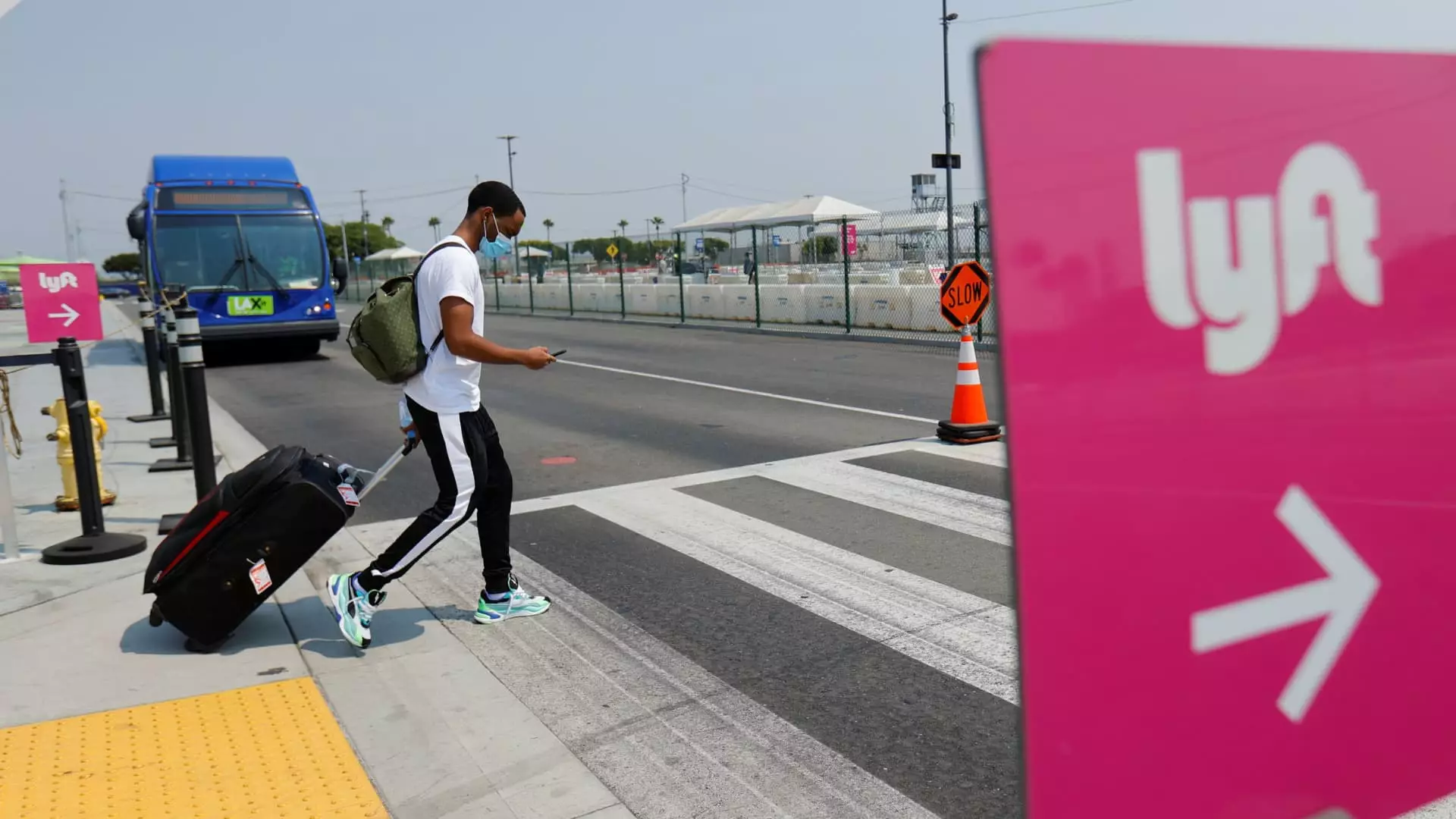In a surprising twist in the ride-sharing saga, Lyft has managed to defy prevailing economic fears, achieving a remarkable 23% surge in stock price in a single day. This significant uptick followed the company’s announcement of expanded share buybacks and commendable gross bookings results that exceeded analysts’ expectations. In the face of escalating concerns about consumer spending and overall economic health, Lyft’s discovery of resilience may serve as a beacon for similar companies grappling with market volatility.
Solid Numbers amidst Economic Uncertainty
Lyft’s CEO, David Risher, expressed optimism during a recent appearance on CNBC’s “Squawk Box,” claiming there’s “nothing to worry about” despite the broader market’s shaky ground. Gross bookings showed a promising growth trajectory, climbing 13% year-over-year to reach an impressive $4.16 billion, slightly edging ahead of StreetAccount’s projection. Interestingly, this performance marks Lyft’s 16th consecutive quarter of growth in this vital metric, suggesting that the company is not merely treading water but thriving, even against the backdrop of rising inflation and global economic challenges.
Adding fuel to the fire, the number of rides increased by 16%, hitting 218.4 million—comfortably surpassing estimates. These numbers indicate a robust consumer demand that seems undeterred by economic gloom, prompting a reevaluation of the narrative that consumers are tightening their belts and pulling back on discretionary spending.
Financial Growth with Room for Improvement
On the revenue front, Lyft reported a 14% year-over-year increase, bringing Q1 revenues to $1.45 billion. However, this figure fell short of the anticipated $1.47 billion, highlighting that while the company is on a growth path, it still faces challenges in maximizing its earning potential. The reported net income of $2.57 million, translating to a penny per share, is a vast improvement from the significant loss a year ago, signifying a transition to profitability that investors have been craving.
One cannot overlook the strategic decision to bump the share buyback plan to a hefty $750 million. This bold move is expected to instill confidence among shareholders, demonstrating that Lyft is committed to enhancing shareholder value as it navigates the current economic landscape. The board’s decision came in the wake of discussions with activist investor Engine Capital, which withdrew its campaign for board changes. This speaks volumes about the perceived stability and the strategical pivots Lyft is making to assure both investors and the market at large of its ability to weather economic storms.
Contrasting Fortunes in the Ride-Sharing Space
Interestingly, Lyft’s competitor Uber seems to be experiencing a different set of challenges. A recent dip in its stock following mixed results stands in stark contrast to Lyft’s buoyant performance. This disparity invites speculation—could Lyft’s distinct strategies and focus on core operational strengths provide it with an insurmountable edge in the fiercely competitive ride-sharing sector?
As Lyft stands on the edge of potential growth, it faces both opportunities and challenges ahead. While the numbers paint a picture of resilience amidst a complex economic landscape, only time will tell if this momentum can be sustained or if the shifting tides of consumer behavior will require more adaptability than ever.

